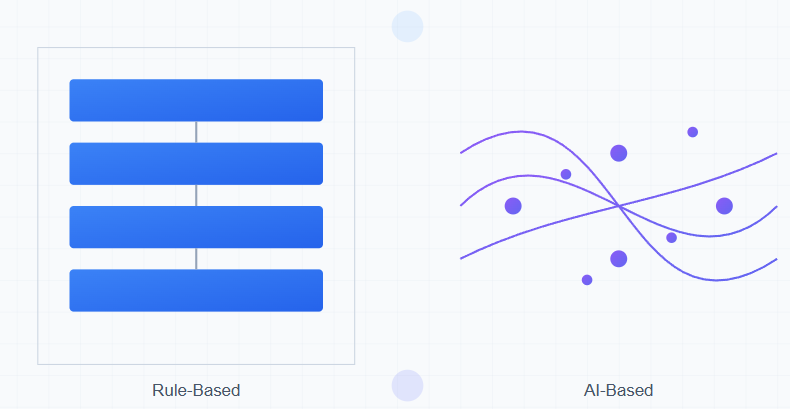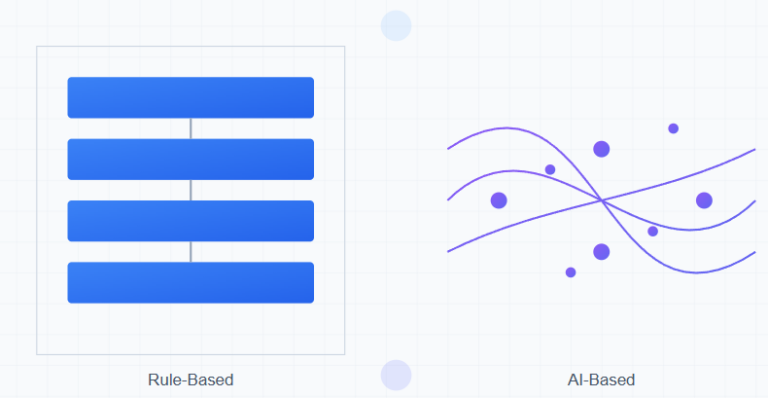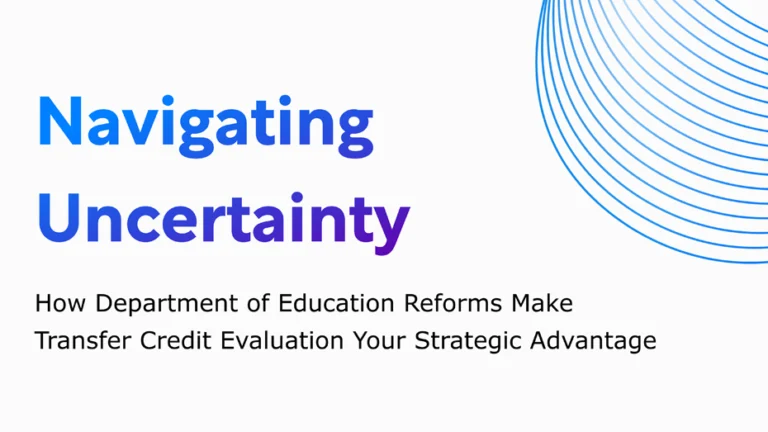Automation has revolutionized the way businesses operate, unlocking new levels of efficiency across industries. At the heart of this transformation lies rule-based automation (RBA)—a powerful tool that uses predefined rules to execute routine, repetitive tasks with speed and precision.
As automation has evolved, so have its capabilities. What role does RBA play in today’s landscape, and how does it compare to emerging technologies like AI?
This blog will break down the nuts and bolts of rule-based automation, exploring its evolution, key benefits, inherent challenges, and its future in the age of AI-driven automation.
What is Rule-Based Automation?
Rule-based automation simplifies workflows by using a set of predefined “if-this-then-that” logic rules to carry out specific tasks. Think of it like a laser-focused assistant—it can follow rules to handle high-volume, repetitive tasks with consistency and accuracy. RBA doesn’t adapt or learn from data; its reliability comes from strict adherence to the programmed rules.
Rule-Based Automation Examples
1. Invoice processing in finance companies
Extracting data like amounts, dates, and vendor names from invoices using a structured workflow.
2. HR onboarding tasks
Automating checklist completion, sending welcome emails, and setting up employee accounts.
3. IT ticket routing
Sorting support tickets into relevant categories based on keywords and urgency.
This concept forms the backbone for many fundamental automation systems. But where did it all start?
The Evolution of RBA
Rule-based automation has its roots in simple macros and scripting, evolving from rigid task execution systems into scalable business solutions. Early RBA focused heavily on repeatability in tasks like data entry and batch processing. Over time, it became a foundational element in Robotic Process Automation (RPA)—software that mimics human interactions on a computer to automate workflows at scale.
Robotic Process Automation
RPA combines rule-based logic with user-interface-level automation, enabling organizations to deploy “bots” capable of performing repetitive tasks. For example:
- Logging into systems
- Copy-pasting data between applications
- Generating standard reports
While RPA expands on the capabilities of rule-based automation, it still relies on rigid rules, which leads us to an important question—what are RBA’s strengths and challenges?
Benefits of Rule-Based Automation
- Enhanced efficiency
RBA executes tasks with machine precision at unparalleled speeds, saving time for human employees to focus on higher-value activities.
- Error reduction
By removing human intervention from tedious workflows, rule-based processes almost eliminate errors in data entry or processing.
- Cost savings
Automation reduces the overhead associated with manual execution, particularly in areas like payroll, invoicing, and email management.
- Consistency
RBA ensures processes are executed in exactly the same way every time, ensuring compliance and predictability.
Challenges in Rule-Based Automation
Despite its success in streamlining tasks, RBA has limitations:
1. Limited learning ability
Unlike AI, RBA doesn’t learn or adapt to new data. For example, if an unusual invoice format appears, the system cannot process it without humans updating the underlying rule set.
2. Dependency on structured data
RBA requires well-organized and structured data. It can struggle with unstructured formats like free-text forms or inconsistent email structures.
3. High maintenance
Every time a rule changes in the process, the system needs to be manually updated, increasing time and effort in dynamic environments.
From Rule-Based to AI-Based Automation
While RBA excels with static, rule-driven tasks, today’s rapidly changing business environments demand more. This is where AI-based automation steps in.

AI-driven automation takes things to the next level by learning, adapting, and making independent decisions. Unlike RBA, which relies on strict rules, AI-based systems analyze data in real-time and provide insights or predictions. For example:
- Flagging fraudulent transactions in finance
- Personalizing customer interactions in marketing
- Predicting supply chain disruptions
The result? Businesses can automate not just routine, repetitive processes but also tasks requiring a high degree of variability, context, or decision-making.
Rule-Based Automation vs AI-Based Automation
Despite its growing popularity, AI-based automation isn’t here to replace RBA—it complements it. Each has its own use. Together, these tools allow organizations to strike the perfect balance between efficiency and sophistication.
Starting Your Automation Journey
While the underlying methods of automation may differ, finding a platform to orchestrate all these components is key. That’s where the ProcessMaker platform comes in. It seamlessly integrates systems, tools, and technologies, combining them to tackle automation challenges with the right approach every time.
New to automation? Schedule a consultation with our experts today and start building a system that blends the best of RBA, AI, and ProcessMaker’s powerful orchestration capabilities.





